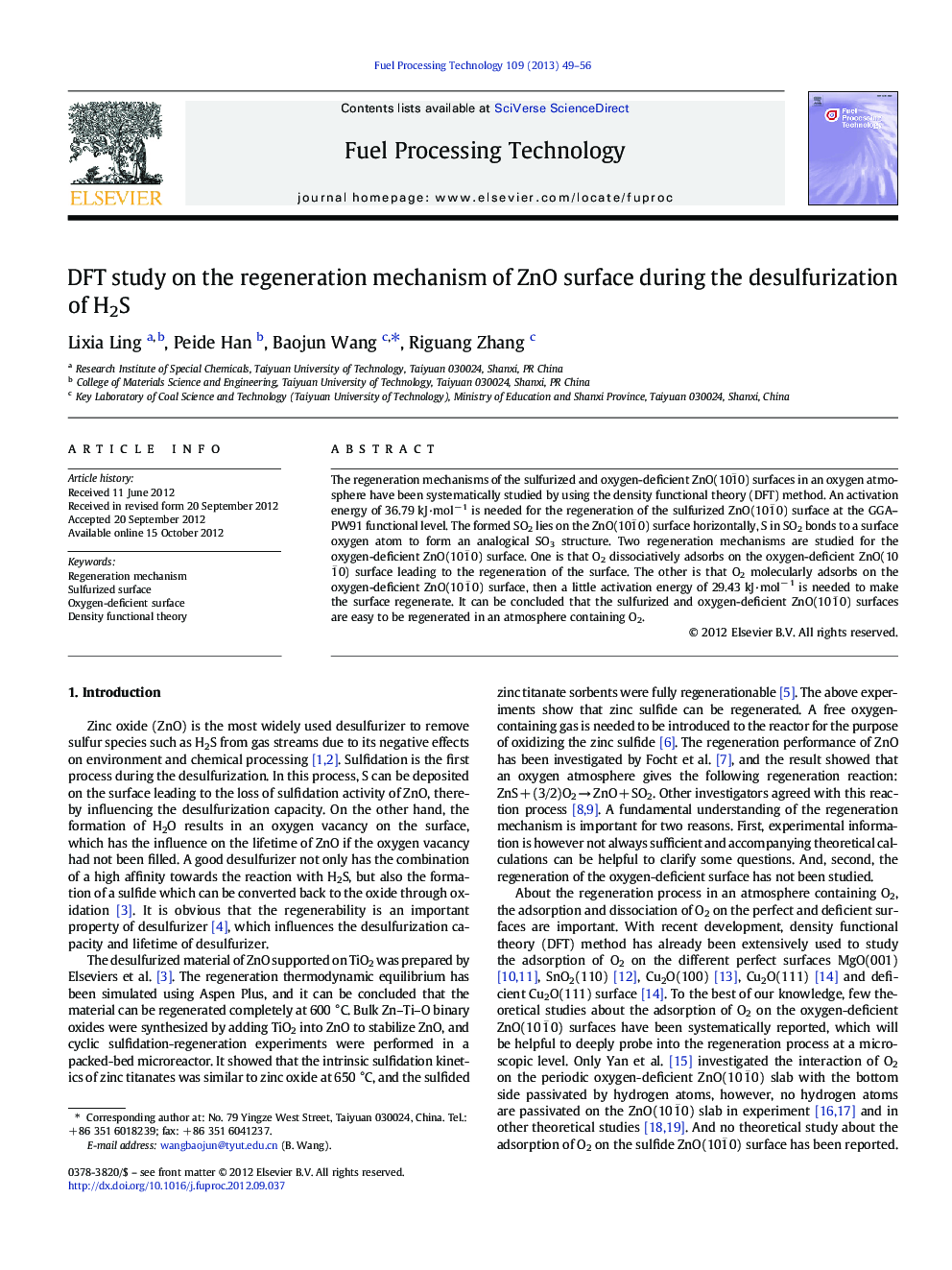| Article ID | Journal | Published Year | Pages | File Type |
|---|---|---|---|---|
| 210160 | Fuel Processing Technology | 2013 | 8 Pages |
The regeneration mechanisms of the sulfurized and oxygen-deficient ZnO(101¯0) surfaces in an oxygen atmosphere have been systematically studied by using the density functional theory (DFT) method. An activation energy of 36.79 kJ·mol− 1 is needed for the regeneration of the sulfurized ZnO(101¯0) surface at the GGA–PW91 functional level. The formed SO2 lies on the ZnO(101¯0) surface horizontally, S in SO2 bonds to a surface oxygen atom to form an analogical SO3 structure. Two regeneration mechanisms are studied for the oxygen-deficient ZnO(101¯0) surface. One is that O2 dissociatively adsorbs on the oxygen-deficient ZnO(101¯0) surface leading to the regeneration of the surface. The other is that O2 molecularly adsorbs on the oxygen-deficient ZnO(101¯0) surface, then a little activation energy of 29.43 kJ·mol− 1 is needed to make the surface regenerate. It can be concluded that the sulfurized and oxygen-deficient ZnO(101¯0) surfaces are easy to be regenerated in an atmosphere containing O2.
Graphical abstractFigure optionsDownload full-size imageDownload as PowerPoint slideHighlights► The sulfurized ZnO(101¯0) surface is easy to be regenerated in the presence of O2. ► SO2 prefers to lie on the ZnO(101¯0) surface horizontally. ► The oxygen-deficient ZnO(101¯0) surface can be regenerated easily.
